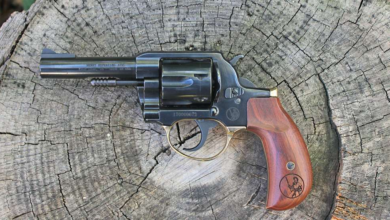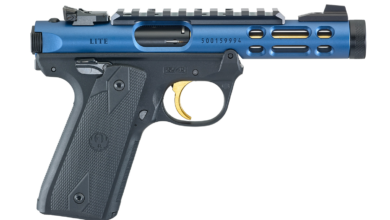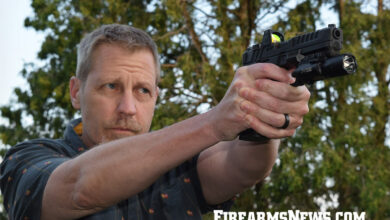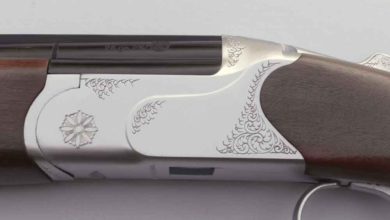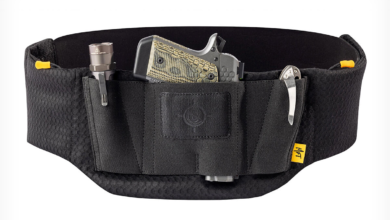Which Guns Are Covered by Illinois’ Assault Weapons Ban?
It was a sunny, summer morning — perfect for the post-COVID-19 return of Highland Park’s Fourth of July parade.
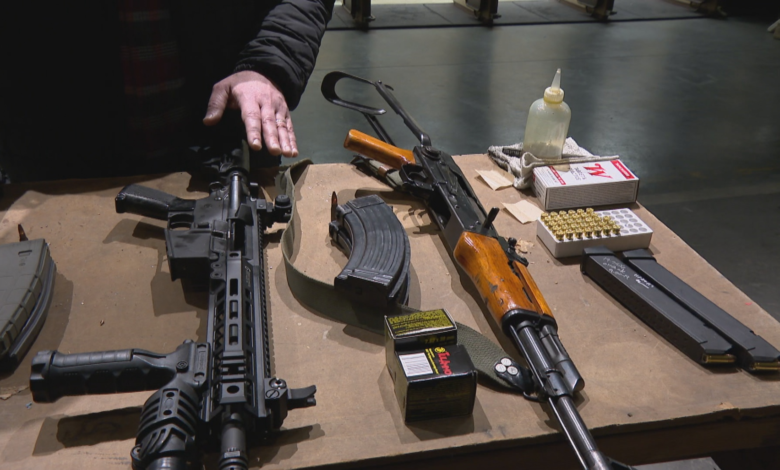
“Literally out of the clear blue sky, I heard what sounded like what I would describe as many firecrackers going off,” Lauren Bennett told Illinois legislators months later at hearing on what would later become the Protect Illinois Communities Act.
It wasn’t firecrackers. It was hailing bullets. Bennett testified how it felt as she was shot in her hip and upper back, how she feared not only for her life but also for her young sons’ lives.
“Imagine a hot, metal dart-like projectile tearing through your body at supersonic speed, faster than the speed of sound,” Bennett said. “You’ll feel it burn through your skin, only to feel that excessive amounts of blood draining out of you and soaking everything. At this point, you most likely feel as if you are dying.”
Sales of the Smith & Wesson M&P 15 used in the Independence Day attack, which left seven dead, are now banned in Illinois, as are nearly 200 other guns classified as “assault weapons” under the new law.
“Illinois now officially prohibits the sale and distribution of these mass-killing machines,” Gov. J.B. Pritzker said as he signed the law in Springfield on Jan. 10, surrounded by survivors of shootings, family members of shooting victims and other gun control advocates.
With his signature, hundreds — potentially thousands when all permutations, makes, models, colors, features and implements are factored in — of guns became illegal for sale in Illinois.
Those who currently own firearms covered by the law can keep them, but they must register them with the state before January 2024.
Dan Eldridge, who owns Maxon Shooters Supplies and Indoor Range in Des Plaines, said the night of Jan. 10, store employees pulled 15-20% of his inventory off the shelves.
He is complying with the law, even though he opposes it, and in his role as president of the Federal Firearms Licensees of Illinois is suing in federal court to strike down the law.
While Illinois law now specifically categorizes certain guns as “assault weapons,” Eldridge said “the term itself — ‘assault weapon’ — is a made-up term by the gun control people in the late ‘80s when they were trying to conflate semi-automatic rifles with machine guns. It’s a made-up term that has absolutely no meaning.”
When pressed to characterize the range of guns that Illinois outlawed, Eldridge described them as “semi-automatic, center-fire rifles that accept detachable magazines.”
Among the guns classified as “assault weapons” are various AR-15 style guns, which Eldridge estimates are legally owned by between 1-2 million Illinois residents.
“It’s America’s favorite rifle platform, and it is that because it is highly adaptable to all shapes and sizes of people,” Eldridge said. “Easily accessorized. Built on a standard. Available at a wide variety of price points and features. It really is a ‘modern sporting rifle,’ as the industry likes to call it.”
(The “AR” does not stand for “assault rifle.” It stands for ArmaLite rifle after the original manufacturer of what is now a class of lightweight, semi-automatic rifles. It’s somewhat similar to when people use the brand name “Kleenex” to reference any type or brand of tissue.)
Eldridge said that ubiquity should legally exempt AR-15s from prohibition.
As the lawsuit argues, “if the right to ‘keep and bear arms’ means anything, it means that the government cannot ban the most popular firearms in the country.”
Eldridge is confident the federal courts will agree with that mindset, based on the U.S. Supreme Court’s Heller decision, which held that the Second Amendment protects arms in “common use” for lawful purposes.
Pritzker likewise has said he is confident Illinois’ law will hold up in court and said that the law’s drafters relied on experts when writing it with an eye toward constitutionality.
Outside of legal arguments, Cook County Sheriff Tom Dart said the popularity of a gun shouldn’t spare it from regulation; he said the widespread-use argument makes no common sense when a type of gun is popular with the wrong crowd, or as he put it, “the bad guys.”
Dart said his deputies are increasingly confiscating guns that fall under Illinois’ “assault weapons” umbrella.
“That was not always the case,” Dart said. “So, like 16 years ago when I started, this was not normal. We wouldn’t get these type of weapons, with this type of lethality. It would be rare occasions where we would get one of them or two of ‘em.”
Illinois’ law covers various “semi-automatic” guns (like AR and AK pattern rifles). They’re termed “semi-automatic” because rounds automatically reload, but the trigger must be manually pulled each time to fire a bullet.
Automatic, or machine guns, were already illegal in Illinois.

